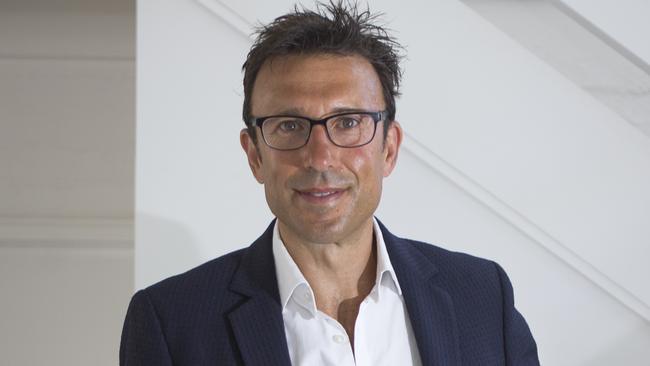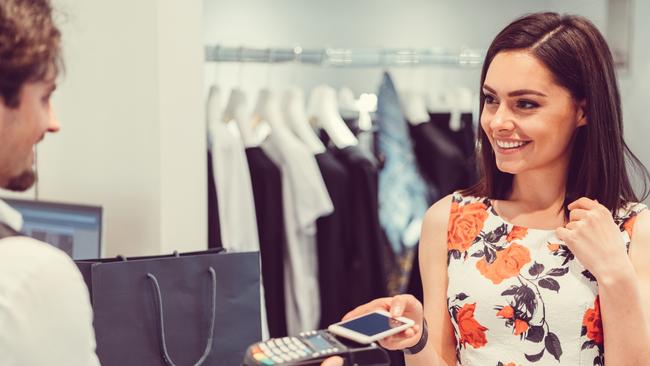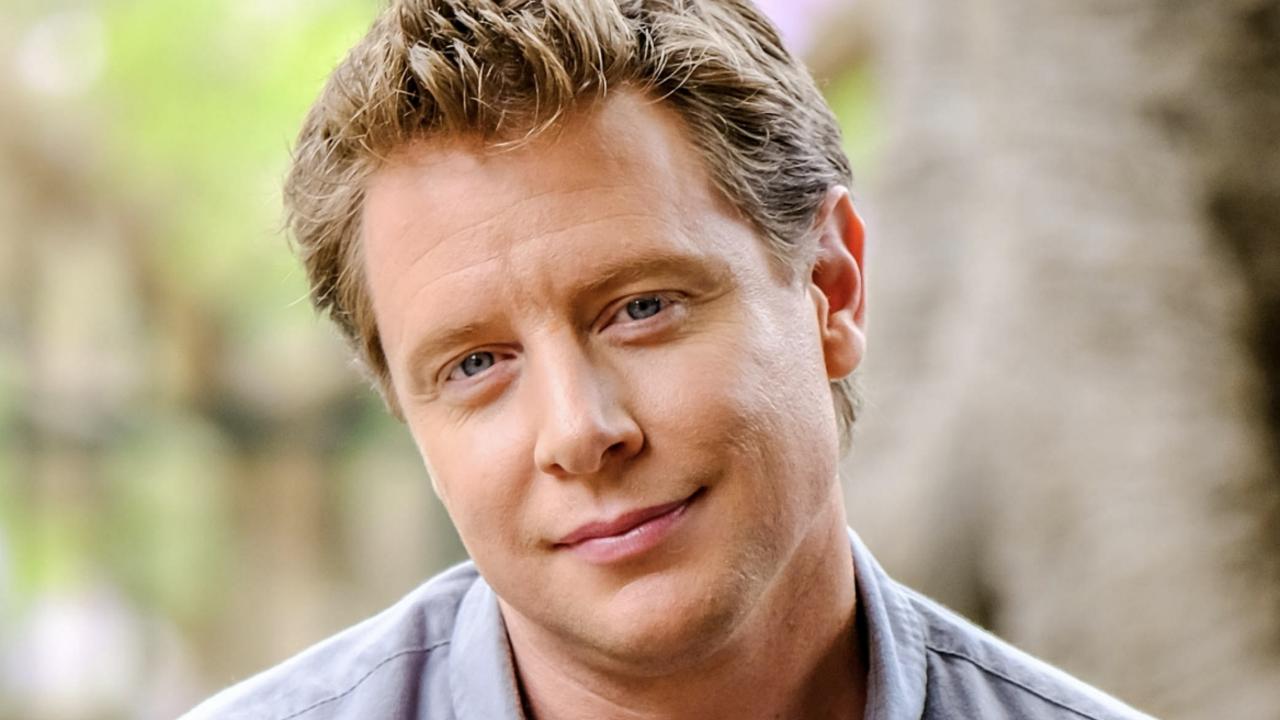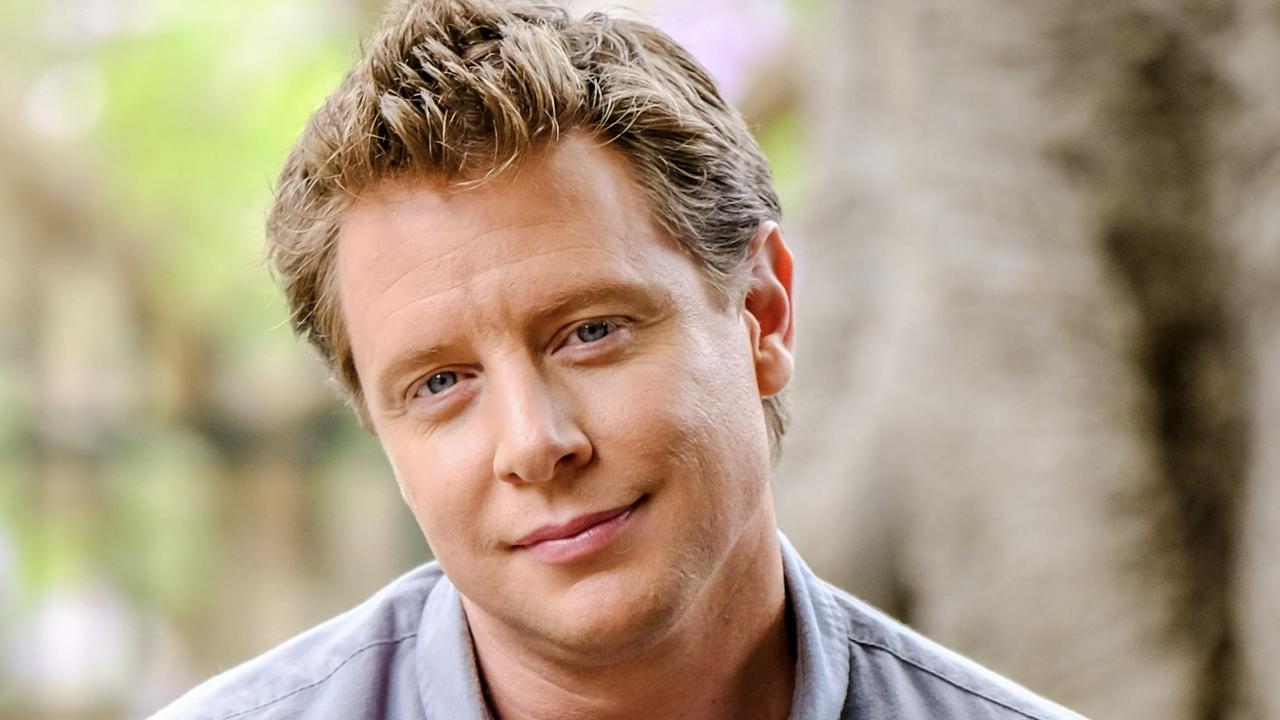Barefoot Investor: It doesn’t pay to be hooked on Afterpay
One in six Millennials who use “buy now, pay later” services like Afterpay are reportedly in financial strife, and once you get hooked on spending someone else’s money, there’s every chance you’ll graduate on to harder stuff, writes the Barefoot Investor.
Barefoot Investor
Don't miss out on the headlines from Barefoot Investor. Followed categories will be added to My News.
On Monday, I broke bread with a bloke who’d just made $54 million … before lunch.
True dinks.
His name is Anthony Eisen and he’s one of the founders of Afterpay.
And he’s very, very rich.
Yet a few years ago he was like any other dad living in the ’burbs. As he’d turn out the lights at night, he’d notice there was always one light glowing across the street.
DANGERS OF BUY-NOW-PAY-LATER SCHEMES
VIRGIN LETS CUSTOMERS PAY LATER
It came from the room of Nick Molnar, a kid in his final year of uni who lived with his parents.
“Probably studying for his exams,” thought Eisen.
One day Eisen got talking to Nick, who explained he stayed up all night working on his eBay jewellery store.
Yet the real jewel that caught young Nick’s eye was a groundbreaking payment system for his store.
“You buy something, and then you make a series of payments … but there’s no interest,” Nick told his neighbour.
“Ummm, that’s actually been around for years. It’s called lay-by”, said Eisen.
That conversation happened about four years ago in a sleepy suburban street in Melbourne.
Today, the Afterpay Touch Group is one of Australia’s fastest-growing companies, worth over $4 billion.
So, how did they do it?
Well, the genius of Afterpay is that it looked at credit from the customer’s point of view.
The traditional credit model involves screwing the customer: think credit cards, personal loans, and so-called “interest free” deals.
Millennials have worked this out, and shun credit as a result. Afterpay screws the retailer instead.
It charges the shop a 4 per cent commission on goods that are Afterpaid (it’s a verb, apparently).
The customer then pays off the purchase in four fortnightly instalments.
And if they pay on time, there are no fees, and no interest.
Think of it as a modern-day version of lay-by with a millennial twist — you get the goods immediately.
Clearly it’s a better option than a credit card, or a personal loan, or anything old Gerry Harvey has come up with.

So here I was meeting up the man who started it all … and I found out that, like me, he’s on a mission to help young people with their money.
“We’re here to help people, it’s in our DNA!” Eisen told me, sounding positively Zuckerberg-ian.
“Steady up, cobber,” I replied.
Here was another fabulously rich white tech dude who was saving the world … one short-term loan at a time.
It’s my job to needle these visionaries on their “new” money thing.
Look, there’s no denying that Afterpay has transformed the way Millennials shop.
However, I’ve learned that with these “new” things, it takes a while for the “bad bad” to show up.
(Case in point: Mark Zuckerberg started out with the simple, wholesome aim of “making the world more connected” ‒ and look where that got him.)
Specifically, what happens when you train a generation to spend money they don’t have?
Because, make no mistake, that’s where we’re headed.
The majority of Afterpay’s 2.6 million customers are Millennials.
Eisen told me that the average outstanding balance for a customer is just $208.
Yet many are on a merry-go-round — 90 per cent of Afterpay’s transactions are from repeat customers.
The result?
Late last year ASIC found that one in six of Millennials who use “buy now, pay later” services like Afterpay are in financial strife … getting overdrawn, delaying bills, or borrowing more.
And that’s why I call Afterpay the “marijuana of credit”. My point is that, once you get hooked on spending someone else’s money, there’s every chance you’ll graduate on to harder stuff.
Still, I seem to be in the minority. That very morning that I met Eisen, the Senate inquiry into the “buy now pay later” industry had left Afterpay off the hook from tougher regulation, which predictably caused the share price to rocket.
In turn, Eisen, already one of the wealthiest men in Australia, was $54 million richer that day, at least on paper.
At the end of our lunch the waitress came over with the bill. “I’ll pay,” said Eisen.
“No, I’ll pay … with cash!”
Tread Your Own Path!
P.S. Afterpay is a hot button for plenty of people. ‒ I’ve been inundated with emails. So this week I’m devoting my questions to it. And to kick it off, someone who is clearly a fan …

Q&As
THE AFTER SERVIETTE STRATEGY
LEWIS ASKS: Come on, Barefoot! Calling Afterpay a “gateway drug”? Afterpay actually fits your “Serviette Strategy” nicely.
For example, my wife and I get $100 each of Splurge money per fortnight.
Afterpay helps me spread out the cost of anything I cannot get for $100.
For example, when I need new running shoes, I do not have six weeks to save up for them!
I have bought dozens of items this way.
Afterpay is not bad if you have self-control.
Your analogy sounds like the lazy rhetoric used by politicians — you are better than that!
BAREFOOT REPLIES: Dude, you’re using the same arguments that people do about credit cards — “only idiots pay interest!”
Trouble is, Afterpay debts are exploding. And financial counsellors tell me they’re seeing people paying off their Afterpay debts ahead of things like rent and other debts, just so they can keep using Afterpay. (If you miss a payment, Afterpay stops you from making any further purchases).
However, given you’re comparing me to a politician, let me invoke the spirit of cranky old Paul Keating: “If you seriously have to break the cost of a pair of sandshoes into four payments, god help you, son!”
AM I A FINANCIAL DRUG DEALER?
PETE ASKS: I run a small online business with my wife.
While I do not use Afterpay myself, we do offer it as a payment option for our customers.
Does this make us financial “drug dealers”?
I admit it makes me uneasy, but it has boosted our sales and I am afraid customers would turn to a competitor if we did not offer it.
What would you say to merchants like us who feel stuck in the middle?
BAREFOOT REPLIES: You’re right, there is a financial drug dealer here — but it’s not you, it’s Afterpay.
Founder Anthony Eisen told me over lunch that, after Google, Afterpay is now the biggest referrer of leads to retailers in Australia.
And as a result they’ve now got a lot of retailers hooked on their drug: millions of shopping-happy Millennials.
You’re currently paying Afterpay a percentage of each sale. Well, tech companies have learned a trick from drug dealers, and they have a track record of jacking up their prices once the addiction takes hold, to capture more of your margin. Google did it. Facebook did it.
Will Afterpay do it? Time will tell. But there’s one thing you should be very clear on — they are not your friend.

CONFESSIONS OF AN AFTERPAY JUNKIE
ANNA ASKS: As someone who fell down the Afterpay rabbit hole and got stuck in a cycle for three years, I completely agree with what you are saying.
I added up every single purchase I had made and found I had spent a disgusting $19,338.39 since April 2016!
Seeing that figure was both humiliating and eye-opening.
I realised I have a problem, so I have sent Afterpay an email to block any further transactions and to close my account when the current orders are paid off.
I am gutted and ashamed that I have thrown away so much money. I look around and cannot even tell you where it went.
Afterpay is toxic.
BAREFOOT REPLIES: Let’s look at the bright side: at least you didn’t do use a credit card.
I deal with shopaholics all the time, and their biggest bill is interest to the bank.
However, what it sounds like you’re saying is that AfterPay got you into a merry-go-round of misery.
At least you didn’t graduate from the weed to the heroin. As I’ve said before, maybe in the future we’ll have before-and-after photos like they do with meth heads.
Before: This is excited Anna, aged 23, buying the cutest diamante collar for her pet pug on Afterpay.
After: This is agitated Anna, aged 24, buying dog food (for herself) with a Nimble loan.
Look, you’re never going to win if you don’t learn to stand on your own two feet and pay your own way.
So good on you for getting clean!
If you have a burning money question, go to barefootinvestor.com and #askbarefoot
The Barefoot Investor for Families: The Only Kids’ Money Guide You’ll Ever Need (HarperCollins)RRP $29.99
The Barefoot Investor holds an Australian Financial Services Licence (302081). This is general advice only. It should not replace individual, independent, personal financial advice.
Originally published as Barefoot Investor: It doesn’t pay to be hooked on Afterpay


